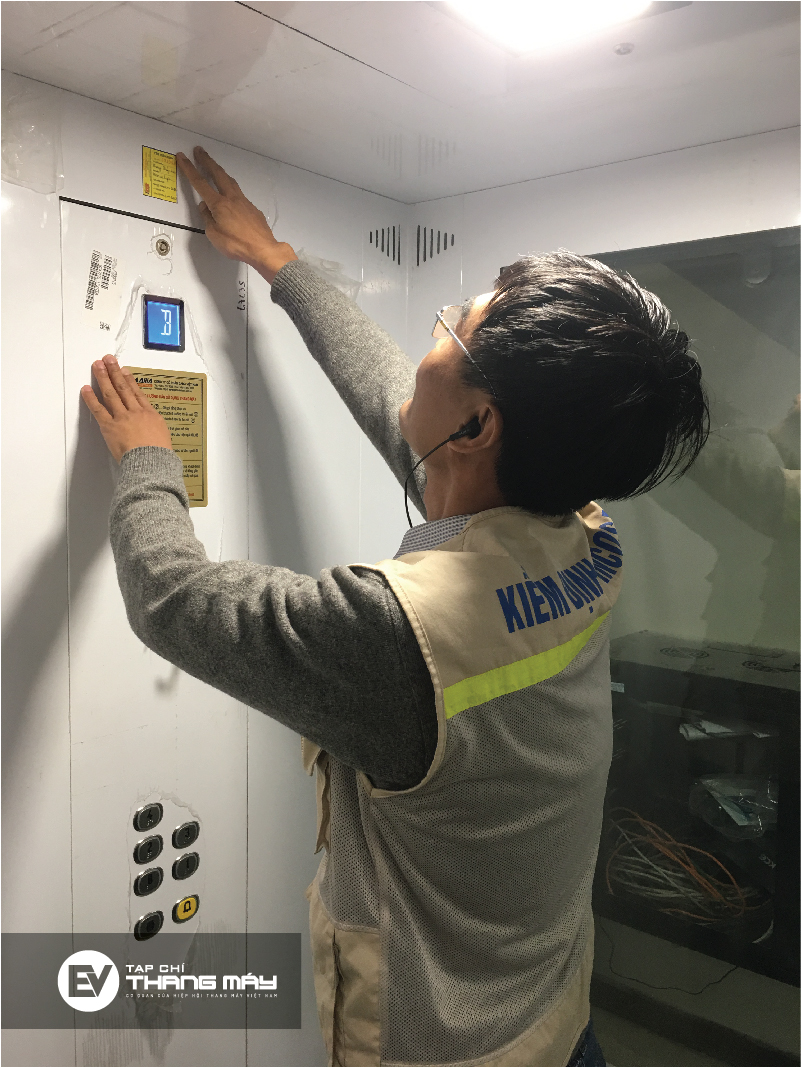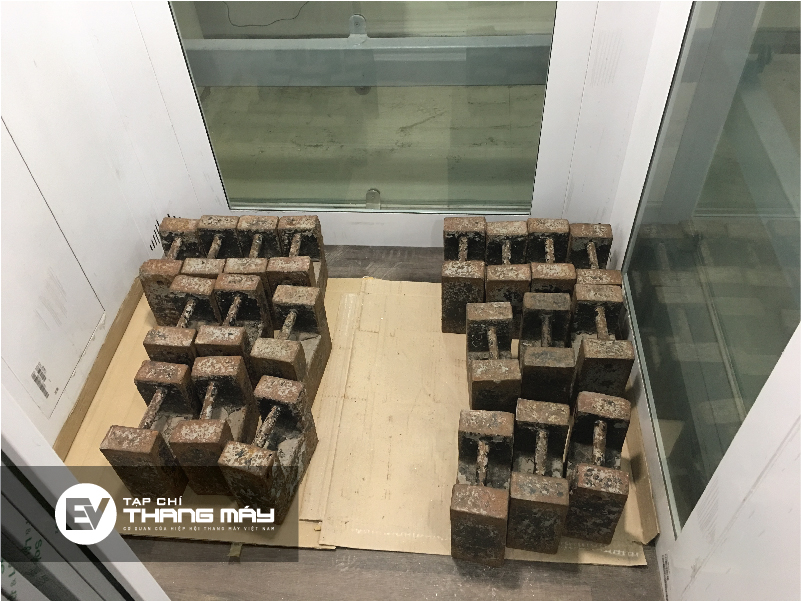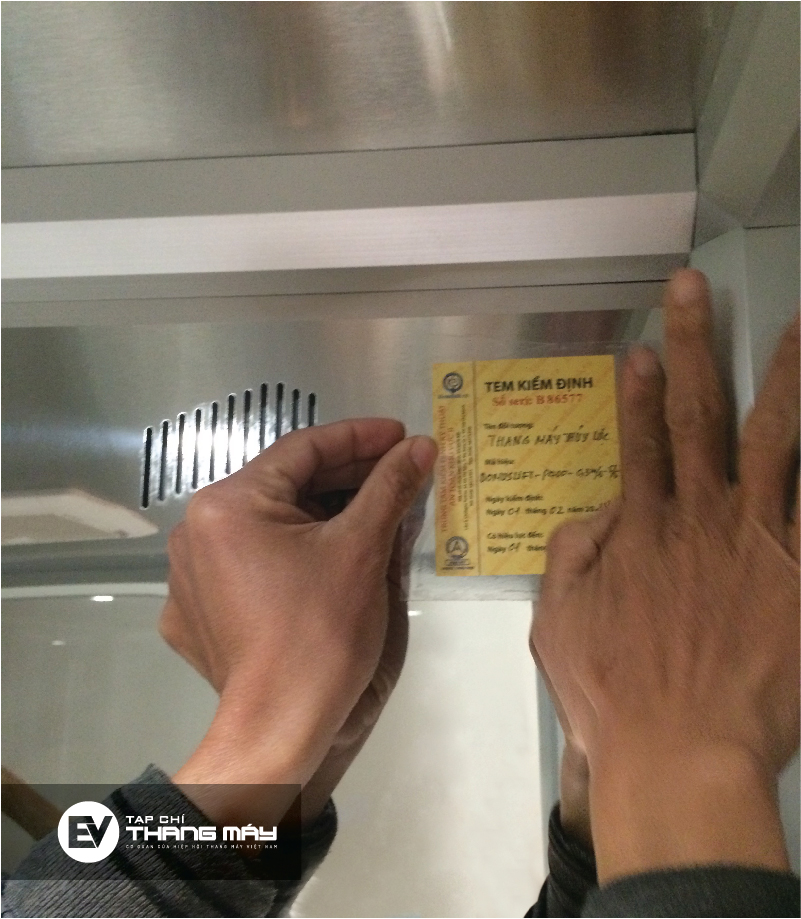Elevators are specified in the category of machines, equipment, materials and substances with strict requirements on occupational safety and hygiene. Therefore, the inspection of elevators before being put into use and periodically is imperative. The most basic information about inspection will be right in the section below.
Why inspection is needed?
An elevator is a device that carries people and objects up high. Therefore, this equipment needs to always be operated in the best state, limiting the risk of problems. To ensure safety, it is mandatory to inspect the elevator before putting it into use and periodically.
Elevators that meet the standards will be stamped after inspection. If the inspection is not carried out, the investor, organization or individual will be fined up to 75 million VND (Article 23, Decree 28/2020/ND-CP).

Which organization is authorized to inspect?
Elevator inspection agencies must be: Agencies (under the state or enterprises) granted the Certificate of eligibility for elevator safety technical inspection.
This inspection license is issued by the Department of Occupational Safety, Ministry of Labor, War Invalids and Social Affairs.
Legal grounds for inspection
Circular 12/2021/TT-BLDTBXH stipulating the verification process for QTKD number: 02-2021/BLDTBXH (Effective from November 15, 2021 to present)
Inspection period
The frequency for periodic safety technical inspection for elevators installed in apartment buildings, offices, commercial centers, hospitals, hotels, manufacturing plants or in public areas is once every two (02) year.
The period of periodic safety technical inspection of elevators installed in other works is once every three (03) years.
The period of periodic safety technical inspection for elevators that have been used for more than 15 years is one (01) per year.
Based on the condition of the equipment, the period for technical safety inspection can be shortened by the inspector’s decision on the basis of an agreement with the organization or individual that owns or manages the elevator.

Inspection process
Step 1: Check technical records
Manufacturing profile, elevator history
Records of installation, completion, replacement records, etc.
Minutes and results of the previous inspection
Operation and Troubleshooting Manual
Step 2: Technical check
Check ropes, details, and parts of the cabin to promptly detect defects, …
Hydraulic system test (for hydraulic lifts)
Measure ground resistance
Step 3: Experiment
Carry out the no-load and load test when the above test steps have passed the requirements.
Then evaluate the operating condition of the safety devices, elevator insurance after the test process.

Step 4: Process the results of the elevator inspection
Make an elevator inspection report in regulated form.
Make minutes of recommendations and corrections.
Issue stamp, issue the results if the elevator inspection meets the requirements.
Elevator inspection fee
Circular 41/2016 of the Ministry of Labor, Invalids and Social Affairs regulates the minimum price when inspecting elevator products.
For elevators under 10 floors, the cost of inspection is 2,000,000 VND/equipment.
For elevators from 10 floors to 20 floors, the cost of inspection is 3,000,000 VND/equipment.
For elevators over 20 floors, the cost of inspection is 4,500,000 VND/equipment.

Penalties for putting elevators into use without inspection
Article 23, Decree 28/2020/ND-CP stipulating penalties for administrative violations in the field of labor, social insurance, sending Vietnamese workers to work abroad under contracts force from April 15, 2020).
A fine of 1,000,000 VND to 2,000,000 VND for not declaring within 30 days when the elevator is put into use.
A fine of VND 5,000,000 to VND 10,000,000 for failing to keep adequate technical records.
A fine of VND 15,000,000 to VND 20,000,000 for violations of the provisions of national technical regulations; using elevators that have not been certified in accordance with the respective national technical regulations; use elevators with no origin, clear origin or expired use.
A fine of 2 to 3 times the total cost of inspecting infringing machinery, equipment and supplies (calculated according to the minimum price set by the competent authority) but not less than 20,000,000 VND and not more than 75,000,000 VND for failure to inspect before putting into use or not to periodically inspect.
A fine of VND 50,000,000 to VND 75,000,000 shall be imposed for one of the acts of continuing to use machines, equipment, and supplies with strict requirements on occupational safety, which have been inspected but the inspection results are not satisfactory.
Thai Son



